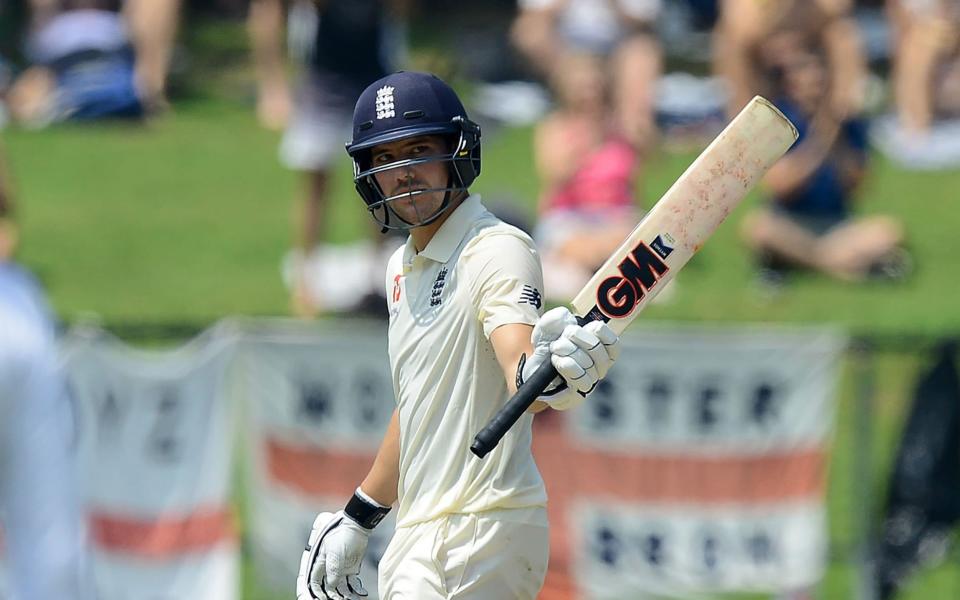England need Rory Burns to step up and set the tone for the side once again

There are batsmen who make lots of runs and boast an average to match, and there are batsmen - nothing fancy - who make runs when they matter most, like Rory Burns.
Burns goes into the second Test at Old Trafford as England’s senior specialist batsman after Joe Root, even though he made his Test debut less than two years ago; and his finest feature is that he scores tough runs at the start of a Test series, when England have been at their feeblest.
If his Test debut was unremarkable, it was in Galle, and English opening batsmen are seldom renowned for their expertise on turning pitches. But Burns still settled rapidly in Sri Lanka, and scored 54 runs per 100 balls - more than three runs per over - by implementing the team tactic of sweeping and reverse-sweeping Sri Lanka’s three spinners to perdition.
Subsequently Burns has set the tone in the opening match of England’s last five series. It is little fault of his that they have lost all five because he has scored 133 against Australia, 80s in the West Indies and South Africa, a fifty in New Zealand, then 30 and 42 in the first Test of this series at Southampton. He has seized the standard, though a junior centurion, and led the charge.
Opening batsmen who set the tone of a series have traditionally been undervalued, except by their teammates. Previews focus on the big names, the star allrounders, the fast bowlers… but so often it is the unglamorous opener, pitching his tent on day one, who defines the series for his side. Like Kraigg Brathwaite, who inspired West Indies with the confidence they could win after dismissing England for 204, by scoring 65 until he was given LBW in one of the many poor decisions which afflicted the tourists in the first half of the game but which almost evened themselves out by the end.
Of his many eminent predecessors as an England opening batsman, Burns resembles none so much as Andrew Strauss. It cannot be a coincidence that both played rugby until their late teens as scrum or fly-halves. Their style is pragmatic, that of a scrapper; they absorb the bouncers because they are used to being kicked; they are not worried about their leading elbow in the off-drive so long as they make tough runs. Indeed, they seldom offdrive, just briskly clip and shovel anything on their legs, and give it the kitchen sink when the ball is short and wide. In the process they reassure their teammates to follow that the bowling is hittable.
In his last four series, following his debut in Sri Lanka, Burns has been first to show the opposition to be mortal. After England had been blasted away for 77 in Bridgetown, his 84 got England into the series (nobody else passed 34 in the game). He had pulled, or rather swept, his weight in Sri Lanka and now his idiosyncratic technique had succeeded against West Indian pace: this fellow had an all-round game, even though he had never been an England Lion or gone on one of their tours, or maybe because of it. Burns learned for himself instead.

A critical, and typical, moment was when he left Whitgift school, effectively Surrey’s academy, where he had to bat at number nine and keep wicket. He was opening the batting for his club Banstead, and moved to City of London Freemen’s so he could keep doing so. He had one year not three at Cardiff university, again identifying what was best for his game, then five seasons of scoring 1000 first-class runs for Surrey - nothing fancy at the Loughborough academy - before England finally realised. So an autodidact, and just as well in a side of so many unproven batsmen, because he has had no top-order colleague from whom to learn.
His 133 against Australia at Edgbaston would have been a match-winner if James Anderson had not broken down and Steve Smith had not made two centuries. In the previous Test, in the one-off against Ireland, Burns had been all over the place but he found the answer with the aid of Neil Stewart, his childhood coach. He can still get too chest-on against a right-arm bowler over the wicket, as a result of compensating for his left-eye dominance, yet he carries on scrapping.
It was his 84 at Centurion that restored England’s confidence last winter when they had been going down like ninepins with a virus. That Burns innings teed England up to win the series, even though Root’s tackle in the football warm-up at Cape Town put him out of the last three Tests. Burns’s Test average is 33.9. His value has been much higher.

 Yahoo News
Yahoo News 